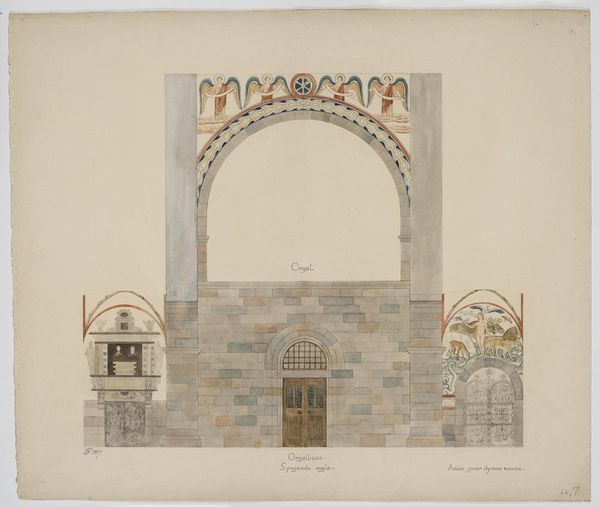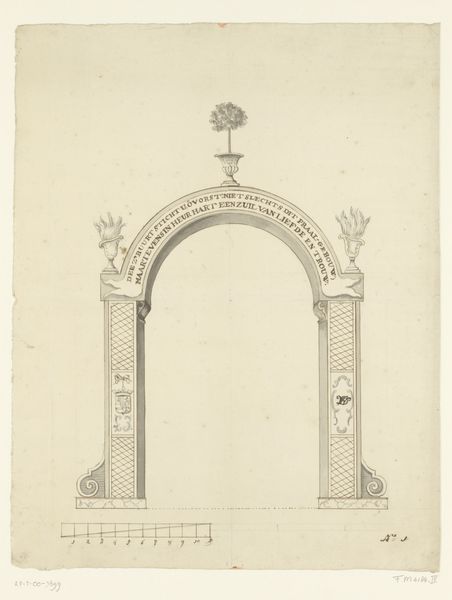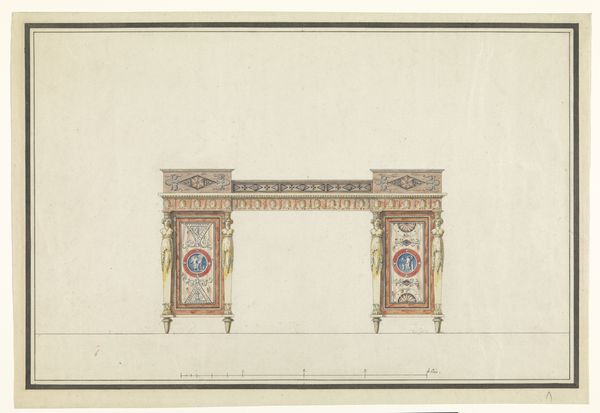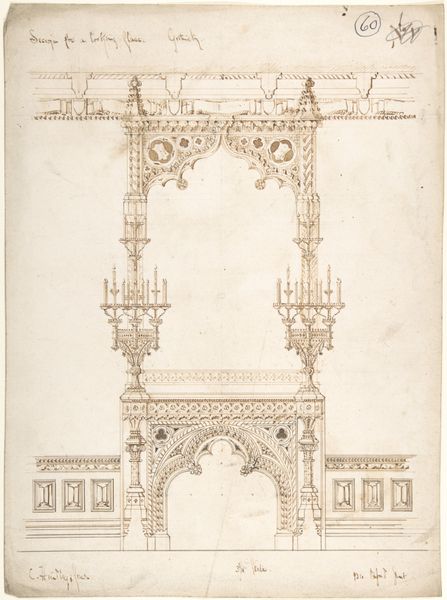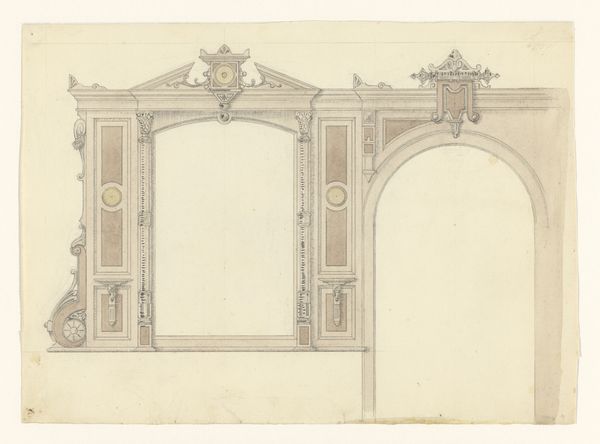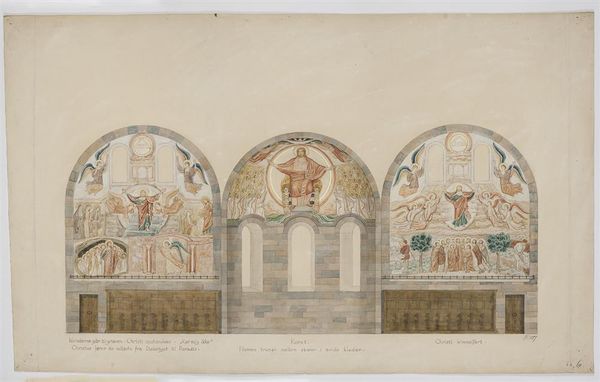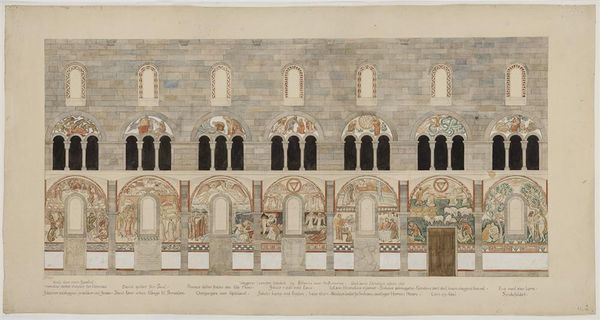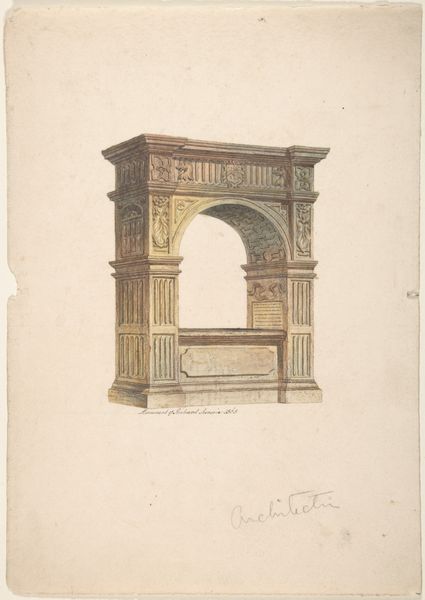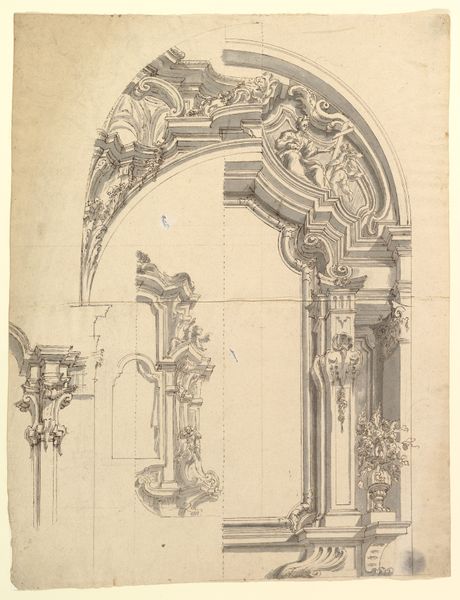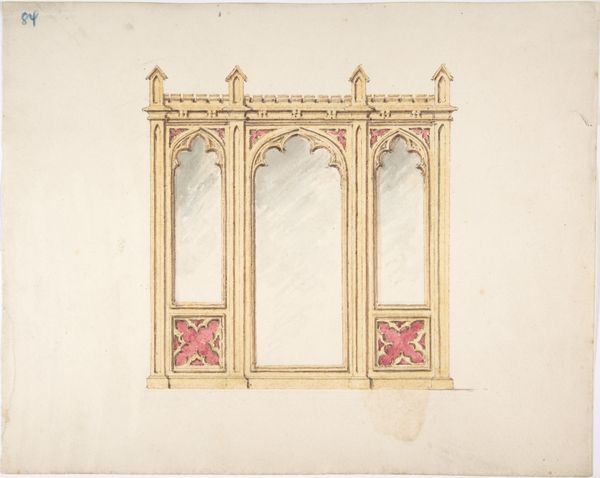
drawing, fresco, watercolor, architecture
#
drawing
#
medieval
#
water colours
#
narrative-art
#
fresco
#
watercolor
#
history-painting
#
architecture
Dimensions: 640 mm (height) x 753 mm (width) (bladmaal)
Editor: So, here we have Joakim Skovgaard's "Udkast til freskerne i Viborg Domkirke. Sejrsbuen" from 1897, a study for frescoes using watercolor. The arch is quite prominent; what story do you see in its design? Curator: I see more than just an arch; I see a reflection of societal values and power structures intertwined with religious expression. Skovgaard is consciously referencing medieval aesthetics, yes, but why? It's a statement. Think about the late 19th century, a period of intense nationalism and a search for cultural identity. By evoking the medieval era, Skovgaard taps into a romanticized vision of Denmark's past. Do you notice any specific elements that reinforce this connection to a specific era and historical power? Editor: Definitely the religious imagery, and the overall architectural style... kind of Romanesque revival? Was there a particular push for religious art at this time? Curator: Precisely! The Church was seeking to reassert its influence amidst growing secularism. So, the commission for Viborg Cathedral wasn’t just about aesthetics, it was a political act. The choice of Skovgaard, with his emphasis on national themes rendered in a ‘historical’ style, becomes significant. Consider how museums at that time played a role too. Editor: Ah, like constructing a national narrative? So Skovgaard is both drawing from the past and actively shaping how people *think* about the past? Curator: Exactly. Museums presented curated versions of history. This artwork participated in a larger discourse – influencing and solidifying national identity through carefully constructed historical narratives. It is an amazing intersection of religious belief, nationalism and how art contributes to socio-political goals. Editor: I hadn't considered how the art world itself was such an active participant. That gives me a whole new perspective. Curator: Indeed, reflecting on the artwork's place in these interwoven networks, reveals the potency of art to affect and engage wider public understanding.
Comments
No comments
Be the first to comment and join the conversation on the ultimate creative platform.
